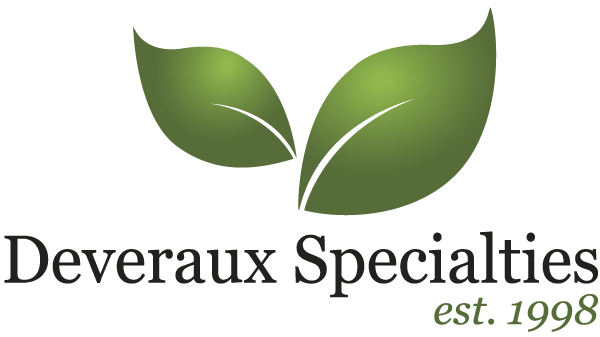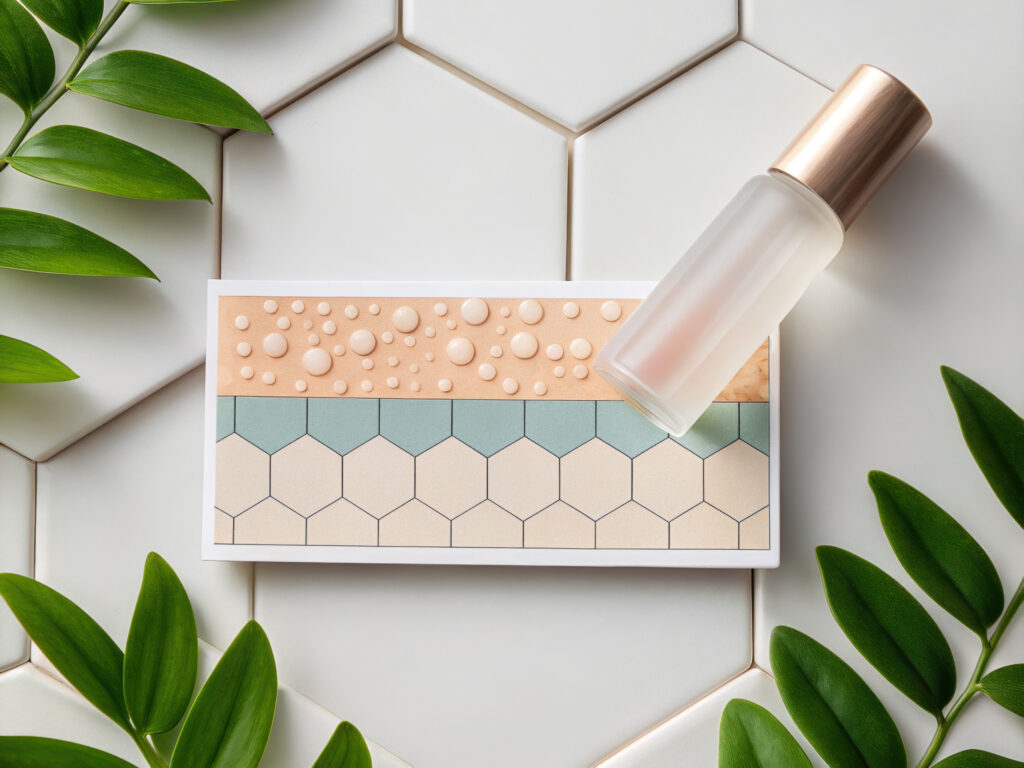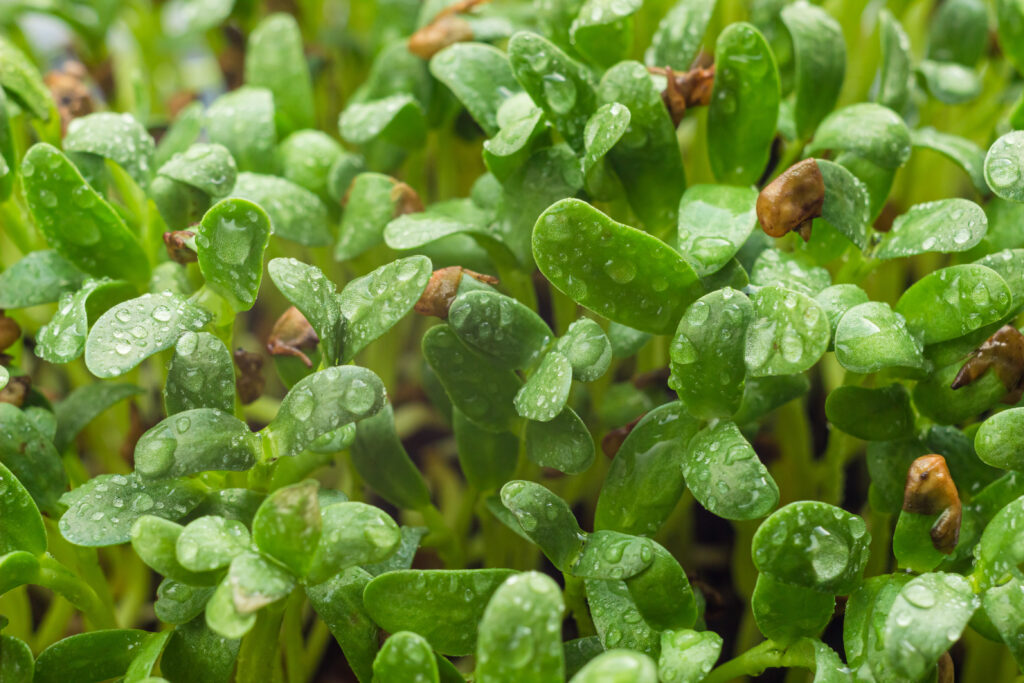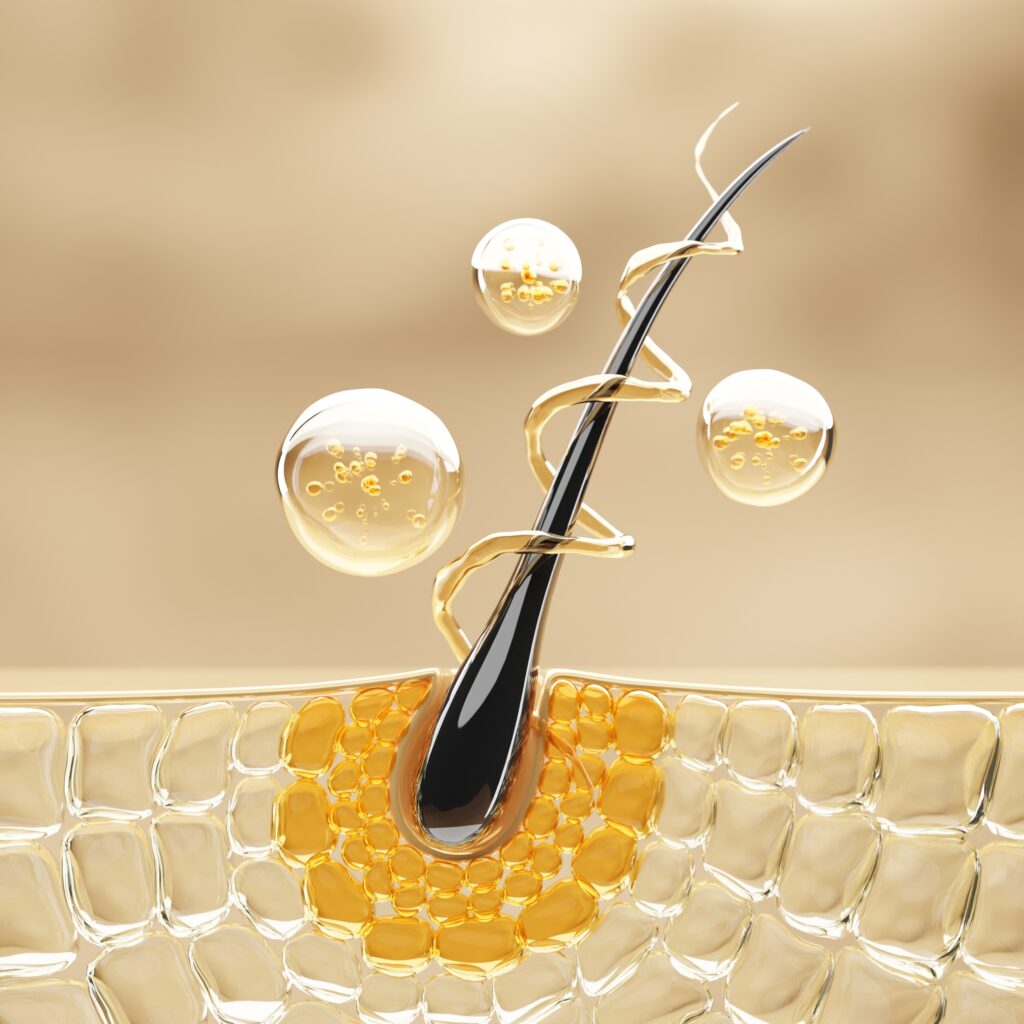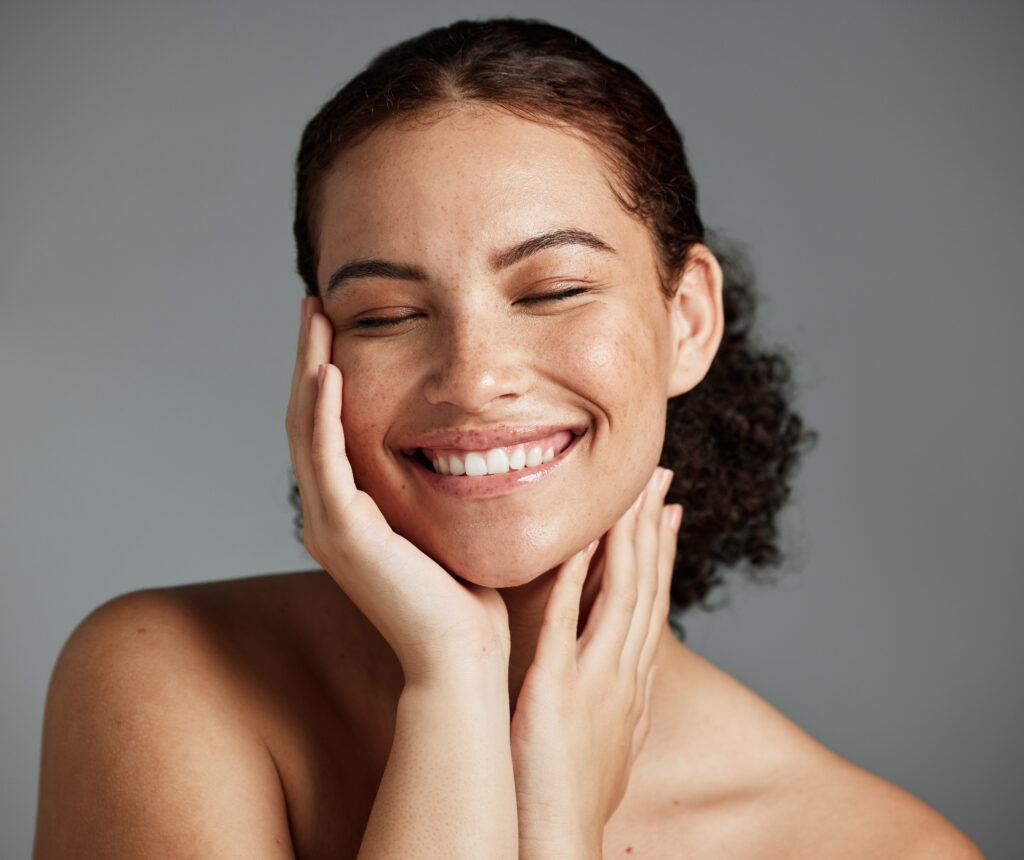When Stress Shows Up on the Skin
In a post-pandemic world, the cosmetic formulator’s toolkit is being challenged in new and unexpected ways. Consumers aren’t just dealing with occasional sensitivity—they’re experiencing a chronic state of cutaneous unrest, often tied directly to their emotional and environmental stressors. It’s not just about redness or dryness anymore. It’s about formulating for skin that is increasingly reactive, emotionally burdened, and biologically out of balance.
Modern skin stress is multifactorial. Psychological stress, poor sleep, and overexposure to digital and urban environments have all been shown to trigger the hypothalamic-pituitary-adrenal (HPA) axis, elevating cortisol levels and promoting neurogenic inflammation. This stress cascade alters the skin’s barrier function, increases inflammatory mediators like IL-1β and IL-8, and ultimately leads to visible irritation and discomfort. For formulators, this presents a growing demand: how do you create skincare that not only protects but actively soothes and resets skin under chronic duress?
The Complexity of Stress-Triggered Sensitivity
Formulating for sensitive skin used to mean excluding irritants and using mild surfactants. Today, that approach is insufficient. Consumers with perceived sensitive skin are often dealing with more than barrier impairment—they’re facing stress-induced dermal changes, including overexpression of TRPV1 receptors (linked to pain and heat), elevated cortisol, and an increase in inflammatory cytokines. These skin responses are driven not just by environmental triggers, but by psychological ones too.
Formulators must now address the full spectrum of neuroinflammation while ensuring clean, sustainable, and effective results. This means managing both the symptoms (redness, stinging, itching) and the root biological causes (immune dysregulation, cytokine overproduction, and CB2/EVS imbalance). The challenge? Doing all of this in a single active that meets clean beauty, multifunctionality, and efficacy demands—without relying on conventional anti-inflammatory agents that offer temporary relief without long-term rebalancing.
The Bio-Mindful Solution: How AnnonaSense CLR™ Recalibrates Stressed Skin
AnnonaSense CLR™ is a biotechnology-derived active ingredient based on an upcycled extract of Annona cherimola, commonly known as Cherimoya. It was developed specifically to address the skin–brain connection and the downstream consequences of psychological stress on skin. Unlike traditional anti-irritants that act on the surface, AnnonaSense CLR™ engages the endocannabinoid system—particularly by activating the CB2 receptor—to restore cellular balance and reduce inflammatory signaling at the root.
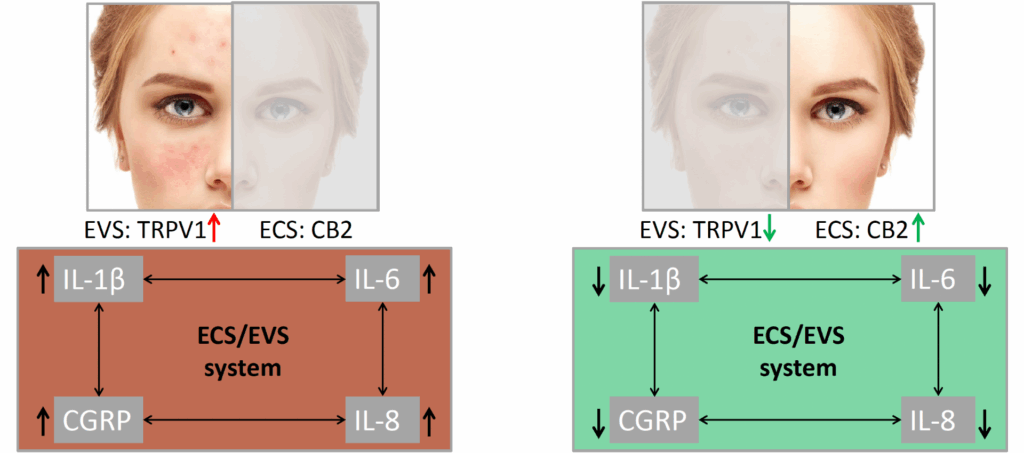
Through its CB2 agonistic effect, AnnonaSense CLR™ actively deactivates TRPV1, a receptor associated with neurogenic inflammation, heat, and itch. By regulating TRPV1 expression, it interrupts the feedback loop between stress and irritation, thereby breaking the cycle of inflammation and restoring comfort. In addition, it significantly reduces proinflammatory mediators such as IL-1β, IL-8, IL-6, CGRP, and the itch-relevant IL-31RA, offering formulators a powerful neurocosmetic tool that supports long-term skin equilibrium.
Where Neurobiology Meets Formulation Performance
Multiple in vitro and in vivo studies validate AnnonaSense CLR™’s capacity to deliver on its neurocosmetic promise. In vitro, the extract demonstrated a significant reduction in inflammatory mediators. Notably, IL-8 was reduced by up to 92% in keratinocyte cultures, while CGRP (a neuropeptide associated with redness and discomfort) dropped by up to 78%. Furthermore, IL-31RA expression was reduced by 65%, directly addressing the mechanism behind stress-induced itch and compromised well-being.
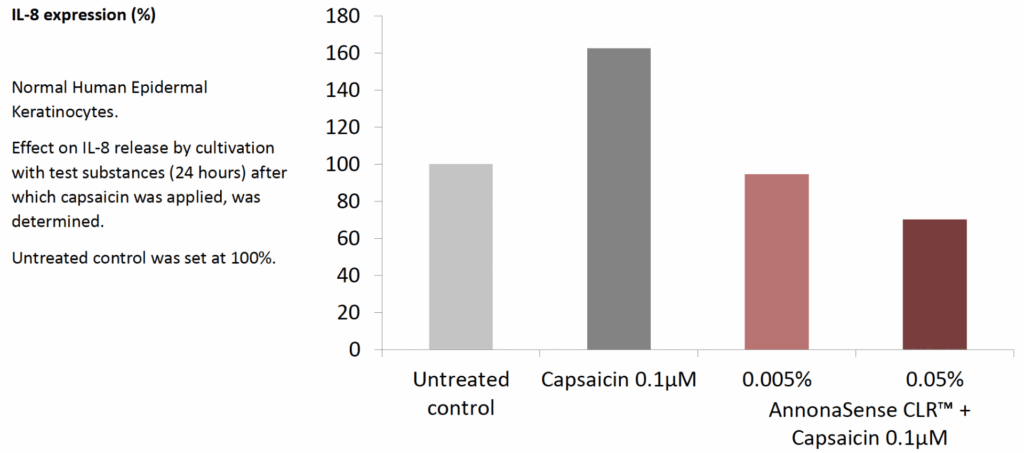
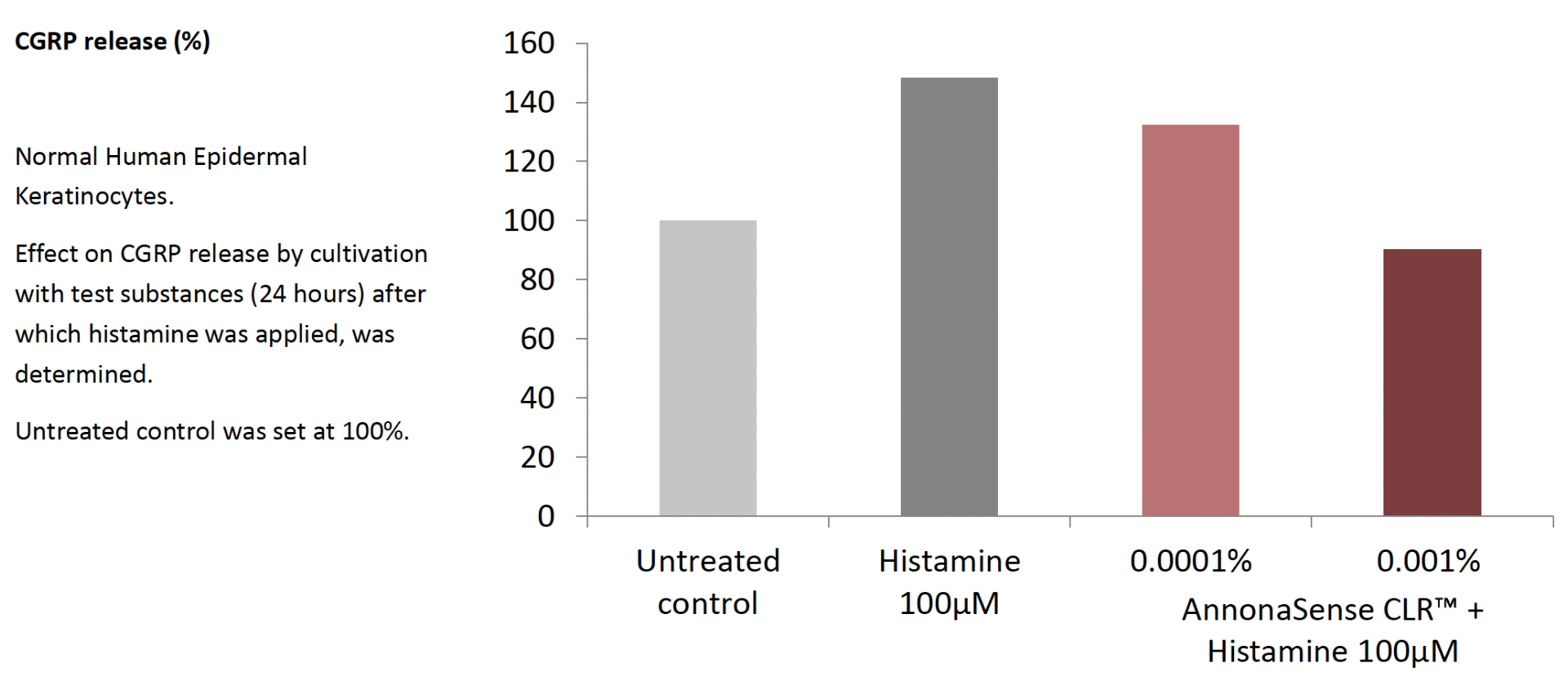
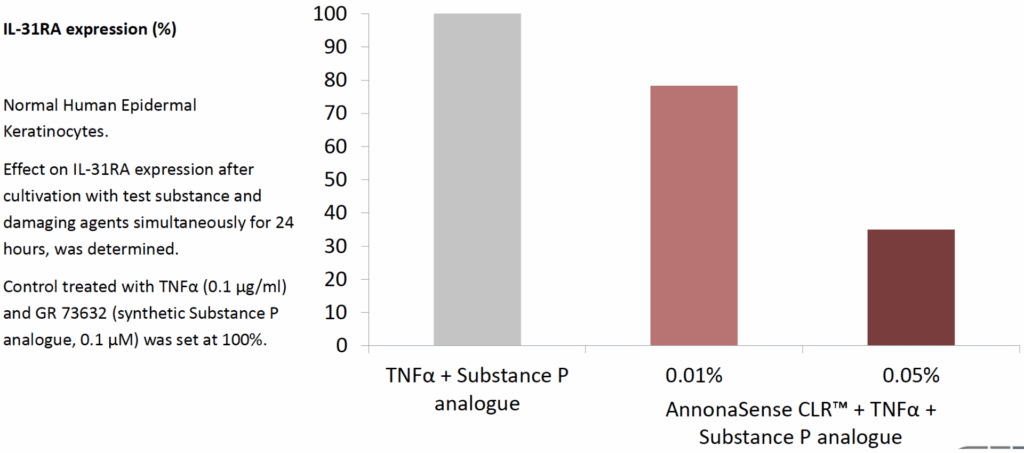
In vivo, its efficacy proved even more compelling. A double-blind, placebo-controlled study involving volunteers with sensitive and stress-affected skin revealed significant improvements in skin appearance and comfort within four weeks. Redness was visibly reduced, and skin sensitivity—measured through capsaicin-based reactivity testing—dropped substantially compared to placebo and massage controls. Perhaps most strikingly, salivary cortisol levels, a systemic biomarker of stress, were measurably reduced after just four weeks of twice-daily application.
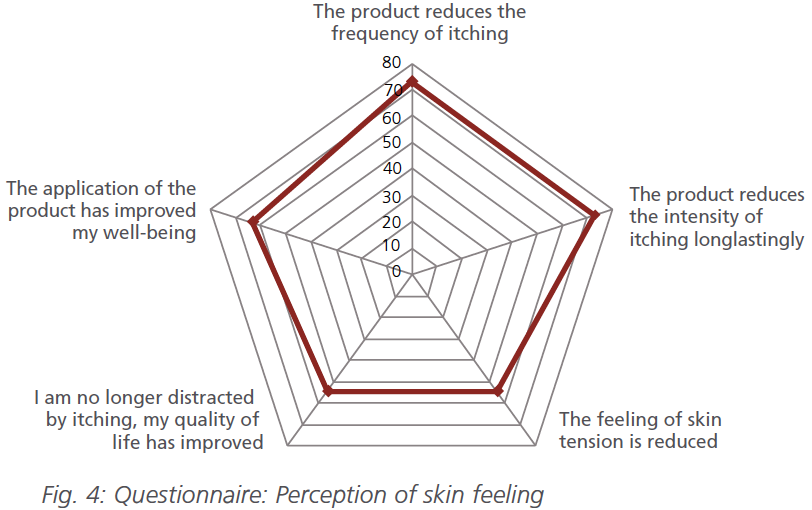
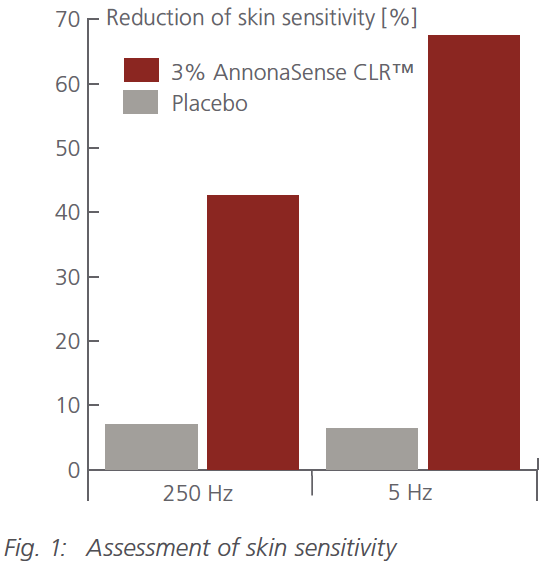
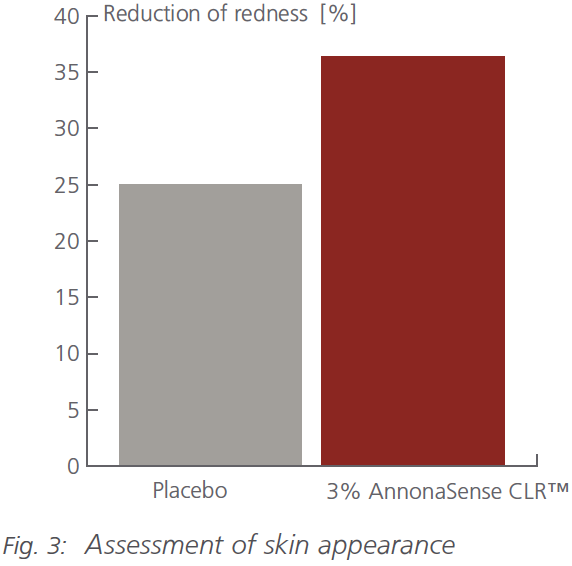
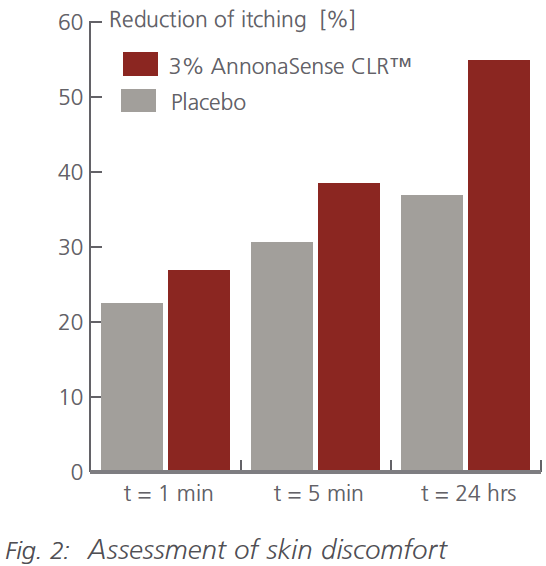
This convergence of psychological and physiological benefit is rare in topical ingredients. AnnonaSense CLR™ doesn’t just reduce redness or discomfort; it helps users feel better about their skin by addressing the internal stress response that’s been throwing it off balance in the first place.
The Future of Formulation Lies in Neurobalance
Bio-mindful beauty is not a trend—it’s a necessary evolution. The industry’s shift toward neurocosmetics reflects growing awareness that skin is not an isolated organ but an extension of the nervous and endocrine systems. Consumers are asking for solutions that are not only visibly effective but emotionally supportive, and they’re willing to invest in products that deliver that dual benefit.
For formulators, this means moving past symptom-focused actives and embracing ingredients that influence systemic skin behavior. AnnonaSense CLR™ offers an ideal platform for formulating next-generation serums, barrier creams, sensitive skin solutions, and pre/post-procedure care. It supports long-term skin wellness by recalibrating immune responses, soothing overstimulated skin, and enhancing well-being—all while meeting demands for clean, upcycled, and COSMOS-certified ingredients.
In the broader formulation landscape, this approach opens the door to multifunctional products that meet consumers’ holistic needs without compromising simplicity or sustainability. Whether you’re creating neuro-balancing overnight masks or everyday moisturizers for stressed urban skin, AnnonaSense CLR™ enables you to offer results that go more than skin deep.
A Smarter Way to Soothe
The cosmetic formulator’s challenge today is not just to calm skin, but to restore its natural equilibrium in the face of chronic stress. AnnonaSense CLR™ rises to meet this need with clinical rigor, sustainable sourcing, and neurocosmetic precision. It is not merely an anti-inflammatory—it is a biological recalibrator that addresses the emotional roots of skin irritation and discomfort.
As formulators look to the future of skincare, solutions like AnnonaSense CLR™ will become essential. They align with growing consumer awareness, meet the criteria of clean science, and, most importantly, deliver real, measurable improvement—both in how skin looks and how consumers feel in it.
Ready to formulate for the mind-body-skin connection?
Reach out to Deveraux Specialties today or connect with your dedicated Sales Manager to learn more about AnnonaSense CLR™ and request a sample for your next neurocosmetic innovation.
Resources
- Beresniak, A., et al. (2015). Quality of life assessment in cosmetics: specificity and interest of the international BeautyQol instrument. Journal of Cosmetic Dermatology, 14(3), 260–265. https://doi.org/10.1111/jocd.12156
- Grolle, M., et al. (2003). The Skin Satisfaction Questionnaire – an Instrument to Assess Attitudes toward the Skin. Dermatology and Psychosomatics, 4(1), 14–20. https://doi.org/10.1159/000070530
- Topp, C. W., et al. (2015). The WHO-5 Well-Being Index: a systematic review of the literature. Psychotherapy and Psychosomatics, 84(3), 167–176. https://doi.org/10.1159/000376585
- Van der Hoeven, H., & Gruber, N. (2023). The power of the brain-skin axis. Pharmacos, March 2023, 18–20. http://www.pharmacos.co.za
